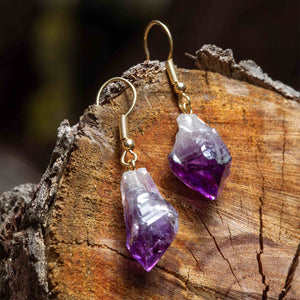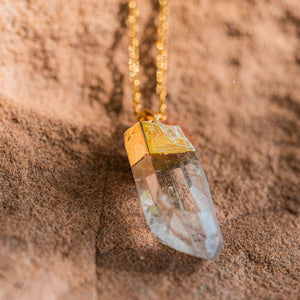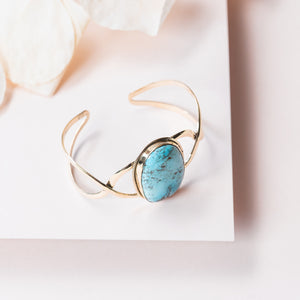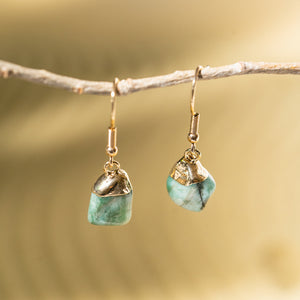How to Tell if a Crystal is Real or Fake
Let’s be honest. We’ve all been there—standing in a shop (or scrolling through an oddly colorful online store), staring lovingly at a shiny new “crystal” and thinking, “Is this genuine Earth magic… or glittery glass from aisle five?”
Don’t worry, you’re not alone. In a world where spiritual tools have gone mainstream—and even your neighbor’s cat probably owns a chakra set—it’s getting harder to tell what’s truly natural and what’s been, well… bedazzled by capitalism.
With crystal healing, energy work, and mindful living becoming part of so many people’s wellness rituals, the authenticity of the stones you use matters. A lot. You deserve to know what you’re holding in your hand and investing your energy in.
Unfortunately, the market is full of imitators. They may look pretty but they lack the energetic integrity that makes the real ones so special.
That’s why it’s so important to be an informed crystal lover. Knowing how to tell if a crystal is real or fake isn’t just about money—it’s about intention, alignment, and making sure the energy you invite into your space is honest and true.
So, grab your mystery stone and a magnifying glass (or, let’s be honest, your phone’s flashlight), and maybe a cup of something herbal. We’re about to decode the glitter, bust the fakes, and help you get crystal-clear—Ayana style.
1. Look Closely: Nature Isn’t Flawless

Perfection may be a goal in modern skincare ads, but Mother Earth? She’s got better things to do.
Real crystals have lines, inclusions, cloudy patches, and even tiny mineral hitchhikers. These “imperfections” are proof that your stone was shaped over millennia, not whipped up in a factory.
Fakes, on the other hand, chase Instagram perfection. Too smooth, too shiny, too uniform—like they were grown in a Pinterest lab.
Inspect your stone under good light:
-
Does the color look flat and airbrushed?
-
Is the surface unnaturally smooth, almost plastic-like?
-
Do the patterns repeat identically (a mass-produced giveaway)?
If it looks more like a marble or chandelier piece, it might be an imposter.
Ayana Insight: Inclusions aren’t flaws—they’re Earth’s fingerprints.
Not all fakes are ugly—some are quite pretty. But if you’re after energy, beauty alone isn’t enough. Next time a crystal seems “too perfect,” ask yourself: does it look like it came from a mountain or a souvenir shop full of rainbow dolphins?
One will support your intentions. The other is just sitting there… looking fabulous (and lying to you).
2. Check the Temperature: Cool = Authentic

One of the simplest (and weirdly satisfying) ways to test if your crystal is real? Touch it.
Seriously—just hold it in your hand.
Real crystals like quartz feel cool to the touch. Not ice-cold, but noticeably chilled, especially at first contact. That’s because natural minerals conduct heat away from your skin and warm up slowly.
Fakes made of plastic or resin, however, often feel room temperature or even warm. And if they heat up fast—like your phone on 5% battery during a FaceTime call—that’s a red flag.
Try This: Press your crystal against your cheek, wrist or anywhere temperature-sensitive. Does it feel refreshingly cool? Good sign. Does it feel suspiciously like a bottle cap? Keep investigating.
Of course, this isn’t foolproof. A sunbaked rose quartz will feel warm, no matter how real it is. But in general, genuine stones stay chill.
Ayana Insight: Real crystals don’t chase your warmth. They hold their own.
So next time you’re unsure, trust your skin. Your body’s sharper than you think—and your cheek? A surprisingly good lie detector.
3. Bubbles Are a Dead Giveaway

Let’s get one thing straight: bubbles belong in bathtubs and fizzy drinks—not inside your crystal.
One of the fastest ways to spot a fake crystal is to hold it up to the light and take a good look inside. If you see tiny round bubbles trapped in there, that’s not a natural gemstone, it’s glass.
Real crystals form in the wild, chaotic embrace of the Earth—shaped by heat, pressure, and time. But smooth, perfect little air bubbles? Not part of the vibe.
Ayana Tip: Grab a flashlight, shine it through your stone, and rotate it slowly. Spot any little bubbles, like someone blew into a snow globe? That’s a sign you’re holding fancy glass.
Ayana Insight: Bubbles are great in champagne, not in your chakra set.
If your stone has bubble trouble, it’s still pretty—but it won’t do much for your energy work. Unless your goal is desk decor. In that case, carry on.
4. Color Test: Too Bright? Too Fake.

Crystals are colorful—no doubt. But when your stone looks like it’s auditioning for a neon rave, it’s time to raise an eyebrow.
Mother Earth doesn’t do neon. She’s more of a moody artist, layering deep purples, smoky whites, and subtle greens with intention. So if your “amethyst” is blindingly purple or your “agate” looks like a Lisa Frank sticker, chances are it’s been dunked in dye like an Easter egg.
Ayana Tip: Wipe the surface with a damp cloth or cotton swab. If it bleeds color like a cheap T-shirt in the wash, congrats—you’ve uncovered a dye job.
Ayana Insight: Natural beauty doesn’t scream for attention—it has depth, presence, and quiet power.
So if a crystal’s color seems suspiciously vibrant, ask yourself: Is it consistent all the way through, or does it look like it got a spray tan and forgot the underarms?
A real crystal doesn’t need to shout to be powerful. Subtle hues carry just as much energy—and a whole lot more honesty.
5. Check the Weight

Let’s talk about something you can judge by how it feels in your hand—weight.
Real crystals have presence—a grounded, dense feel that just feels right. Formed under pressure, packed with minerals and metals, they carry history in their weight. That kind of depth doesn’t come lightweight.
Now, fakes? Often made of resin, plastic, or hollowed-out glass, they feel… suspiciously airy. Like that friend who swears they’ll help you move but vanishes on the big day. Pretty, but unreliable.
Quick test: Pick up your stone and ask, “Would this hurt if I dropped it on my foot?”
-
If the answer is yes, it’s probably real.
-
If the answer is no, it’s likely fake.
(Not that we recommend toe-smash experiments. Crystals may heal energy, but they won’t cover foot injuries.)
Denser stones like Obsidian should feel noticeably heavy. Some fakes are sneaky, mixing stone powder with resin to add just enough weight to fool you.
Ayana Insight: A lightweight “crystal” is usually just a pretty impostor on a crash diet.
If it feels more like a ping-pong ball than a chunk of Earth, it’s time to question it.
6. Know the Usual Suspects

Some crystals are just… drama magnets. Maybe it’s because they’re beautiful or wildly popular on Pinterest. Whatever the reason, certain stones get faked more than celebrity autographs at a comic con.
Let’s shine a light on the biggest crystal identity crises—so you don’t get catfished by dyed howlite in turquoise’s outfit.
Turquoise
-
The Fake: Dyed howlite or magnesite—white stones with veins, soaked in blue dye.
-
The Giveaway: Too cheap, too perfect, too blue. Real turquoise is soft and shouldn’t have a plastic shine.
Citrine
-
The Fake: Amethyst that’s been literally baked until it turns yellow-orange.
-
The Giveaway: Real citrine is pale yellow or champagne-like. The dark amber-orange stuff? Toasted, not natural.
Ayana Insight: When a crystal’s popularity skyrockets, the fakes aren’t far behind. (Looking at you, “Aura Quartz.”)
And sure, some fakes start as real minerals—before being dyed or coated beyond recognition. But once a crystal’s had more makeovers than a reality show contestant, its energy isn’t exactly pure.
So next time you see a “citrine” that looks fresh off a pumpkin spice latte ad—pause. Ask questions. Or better yet, walk away slowly while pretending to text someone.
7. Do the Scratch Test

If you’ve ever felt tempted to scratch something just to prove a point—good news. Science backs you up on this one.
Crystals are ranked on the Mohs Hardness Scale. Talc is the softest at level 1, while diamonds reign supreme at level 10. Most common crystals, like quartz, sit at a solid 7, meaning they can scratch glass. Plastic, resin, and most fakes? Not so much.
Ayana Tip: Try scratching a piece of glass or an old window you’re not emotionally attached to.
-
If your crystal leaves a mark, it’s likely real.
-
If it gets scratched instead, or does nothing at all—it might be faker than your last online date.
But let’s be real. This test has risks. You could damage the stone, the glass, or your relationship with whoever owns the table you’re testing it on. So unless you’re okay with potentially scuffing your beloved rose quartz, maybe leave this one to the pros—or reserve it for pieces you’re already skeptical about.
Ayana Insight: We love a little science moment, but no crystal should be sacrificed for curiosity alone. Scratch responsibly.
Some stones look alike but have different hardness levels—like real turquoise, which is much softer than dyed howlite. If your “turquoise” scratches like a 7, surprise! It’s howlite in disguise.
8. Price Check: Too Cheap? Think Twice.

We all love a good deal—it’s human nature. But when you spot a massive “amethyst cluster” for $3.99 and it includes free shipping, a chakra chart, and maybe a toaster… it’s time to activate your inner skeptic.
Real crystals aren’t dirt cheap. They’re mined, cut, shaped, cleaned, and transported—sometimes from deep underground, across the globe. That takes effort. And unless a seller has a magical teleportation deal with the Earth’s core, they’re paying something to get it into your hands.
So when a seller offers what looks like a museum-worthy specimen for a price that barely covers a coffee? It’s not generosity—it’s probably a fake.
Ayana Tip: Ask yourself, “Could this price feed a small cat for a week?”
-
If yes, it might not be real crystal.
-
If no… maybe feed the cat first.
Now, not every affordable crystal is fake. Small tumbled stones and raw chips can be budget-friendly, especially common minerals like clear quartz. But giant, flawless pieces for suspiciously low prices? That’s when your crystal radar should start beeping.
Ayana Insight: A real crystal is an investment—in energy, intention, and integrity.
At Ayana, we value honest sourcing and fair trade because a crystal’s energy matters as much as its look.
Trust your intuition—but if your bank account raises an eyebrow, trust that too.
9. Ask Questions. Real Sellers Won’t Flinch.

Here’s a little secret from the crystal world: if someone’s selling the real thing, they’ll want to talk about it.
Ethical sellers are usually crystal nerds (the best kind)—the ones who can talk for hours about mineral structures, and whether your smoky quartz is natural or irradiated. When you ask a question, they light up. If instead, they look like you just asked for their ATM PIN? Red flag.
Ayana Tip: Ask These Questions Before Buying
Where was this crystal sourced?
-
A legit seller will know—or at least give a general region.
-
If the answer is “somewhere spiritual” or “the warehouse”… not a great start.
Is it natural, dyed, or treated?
-
There’s no shame in treated stones—but there is in pretending otherwise.
-
Transparency (pun fully intended) is everything.
Buying Online?
Look for:
Clear, detailed photos (not just stock images).
Honest labeling—if it’s dyed, treated, or man-made, they should say so.
Ayana Insight: If a seller gets defensive or vague without giving actual answers, take a deep breath and run like a malachite that just heard about fakes.
Not every seller is shady. Many are kind, conscious folks trying to share something beautiful with the world. But the good ones welcome questions—in fact, they appreciate informed buyers.
10. Energy Doesn’t Lie

You can study crystal charts, memorize Mohs hardness levels, and become a professional bubble-spotter—but at the end of the day, your most reliable tool is… you.
Because here’s the deal: real crystals feel different.
They may not buzz like a phone or shoot rainbow lasers, but they often create a shift—a calmness, a grounding or opening sensation when held. Sometimes it’s subtle. Sometimes it’s instant. But when it’s real, something just clicks.
Fakes? They tend to feel like… nothing. Pretty? Yes. Energetic? Eh. Like trying to have a deep conversation with a plastic plant.
Ayana Tip: Test It Yourself
Sit quietly with the stone in your hand.
Breathe. Pay attention to your body.
-
Are your thoughts calming? A warmth? A subtle pulse?
-
Or are you just wondering what’s for dinner?
It’s not about forcing anything—it’s about noticing. Energy doesn’t have to be loud to be real.
And yes, sensitivity takes time to build. Some people feel everything. Some feel nothing. All valid. What matters is trusting your experience—not just a label.
Ayana Insight: If a stone calls to you, trust it—but verify. Spiritual doesn’t mean gullible.
Crystals aren’t just accessories—they’re allies. Choose them with intention and honesty.
You wouldn’t invite just anyone into your energy. Treat your crystals the same way. Listen, observe, and when in doubt, ask for help—or shop with someone you trust. (Hi! That’s us. 👋)
At Ayana, We Keep It Real. Literally.
Every piece in our collection is ethically sourced and vetted by a very judgmental team of humans.
We’ve worked hard to ensure that what you receive isn’t just real—it’s something you can feel good about holding, wearing, or meditating with.
Because in a world full of filters and fakes, your healing deserves honesty.
🛍️ Ready to build your collection with confidence?
Explore our ethically sourced, energy-charged crystal collection!


















